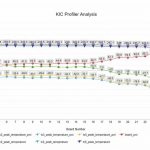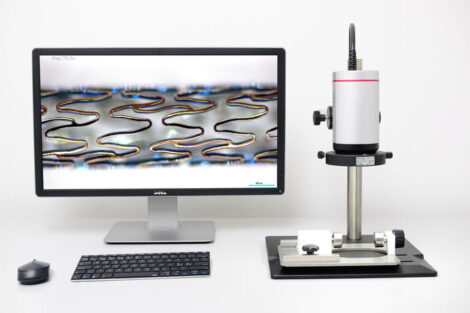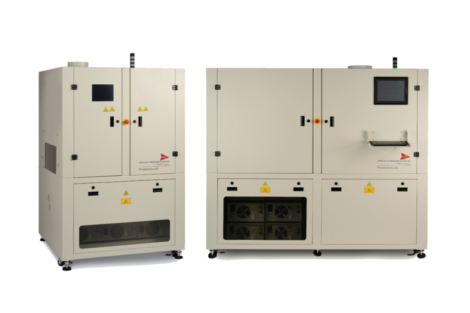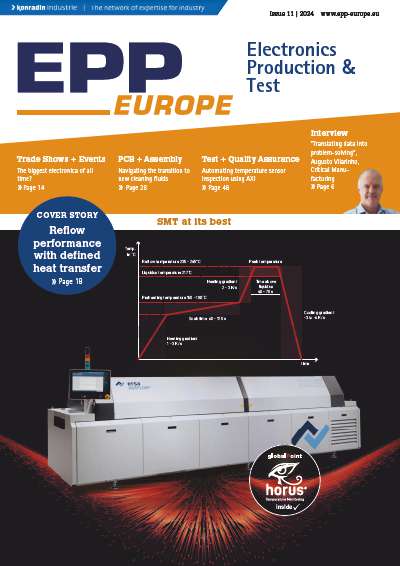With V-One, the company links all the key inspection systems, including the reflow oven, an important area previously considered a “black box.” With the integration of KIC’s RPI reflow inspection solution and the Vantage software, V-One can now access and connect to valuable reflow production profile data in real-time. By connecting to other systems and taking a proactive role in the manufacturing processes, the process engineer can create an intelligent network along the entire value chain that can communicate and control with less human intervention. ViTrox’s focus on the inspection machine, together with real-time reflow production profile inspection, has evolved from defect identification to defect prevention through real-time machine data and process monitoring and analysis.
Vantage + V-One = Machine-to-Machine solutions
The ecosystem establishes inspection and reflow integration cases by looking at thermal data, board data, statistics, trends and defects inspected on AOI systems and RPI systems.
In an AOI system with an inline review and repair station (VVTS), operators review and judge the calls as either potential failure or true failure. However, there will be instances when a technician may have difficulty making a judgement from the pictures and data presented due to a borderline status. This requires more data to make a good judgement, and the result of the call will add to the process parameters in the future. So, what can the technician do?
The real-time reflow process monitor allows users to review reflow inspection data in the form of temperature profile statistics and to determine the quality of the reflow profile directly from the smart AOI station. Areas of review encompass the solder characteristics of a solder joint and its profile quality (PWI – Process Window Index) in terms of adhering to the established soldering spec limits. Continuous monitoring and review of the reflow inspection trends also supports the decision-making process.
Factory floor example
Let’s look at a possible scenario in a manufacturing environment. In a high-volume, low-mix environment (HVLM) scenario, production output is the most critical factor in the production line where pressure is constantly being built up to produce more and more. In some instances, boards are jammed in the production line and then pushed into the reflow oven without adhering to the loading factors or taking into account the impact that the number of boards in the oven may have on the production profile.
The reflow process data captured in the smart AOI software reveal trends where the board profile PWI rapidly moves towards, and eventually beyond, the upper process limit. This is due to a drop in peak temperature. A process owner who understands the behavior of such temperate trends will quickly identify that the oven loading is too great. However, the process expert may not always be on the production floor. In this scenario, V-One and Vantage act as a background monitoring alarm to review such trends and set thresholds to alert the process expert whenever these situations begin occurring.
The appropriate person can be alerted via an eTicket on his/her mobile device that, in turn, enables visibility to the production profile data. The data automatically is stored for traceability purposes.
Conclusion
With the move toward connected and smart factories, today’s electronics manufacturers require solutions that will help them maintain high-quality, low-production costs. The ideal smart factory with i4.0 technologies requires equipment and software that can work automatically and autonomously with machine-to-machine communication, as well as allow for machine-to-human collaboration for the best results based on sound decision making. The above-referenced smart AOI and reflow process inspection ecosystem meet the demand for these requirements and provide an i4.0 solution of actionable data and insight when and where needed. This technology strives to make defects a thing of the past.
www.kicthermal.com; www.vitrox.com
Zusammenfassung Résumé Zusammenfassung russisch
Machine-to-Machine-Kommunikation ist eines der Werkzeuge, die in intelligenten Fabriken eingesetzt werden, um Fehler nachhaltig zu verhindern. Der Artikel zeigt Beispiele für Technologien, die eine Ursachenanalyse und mögliche Vorbeugung ermöglichen.
La communication entre machines est l‘un des outils utilisés dans les usines intelligentes pour prévenir efficacement les erreurs. L‘article présente des exemples de technologies permettant l‘analyse des causes profondes et la possibilité de prévention.
Коммуникация «машина-с-машиной» — это один из инструментов, который используется на интеллектуальных фабриках для длительного предотвращения ошибок. В статье приводятся примеры технологий, которые позволяют выполнять анализ причин и принимать возможные меры по их устранению.
















